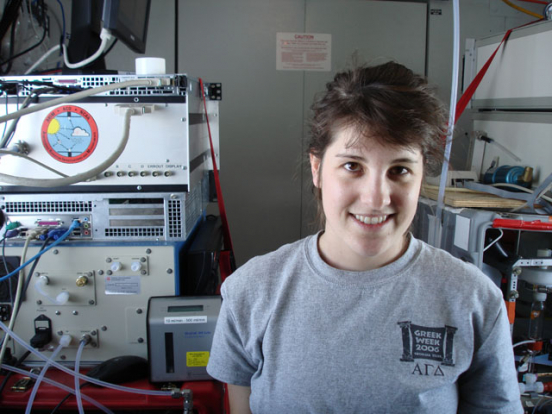Bonnie Reichardt, a undergraduate student from Georgia Tech, collects data on nitrogen oxides at Summit. Her work includes taking samples from a homemade Nitrogen Oxide (NO) sampler complete with four flow controllers, two pumps, an ozonizer, a photomultiplier tube (PMT), and cooler. Basically, ozone is made from oxygen gas in the ozonizer and combined with ambient air; the reaction produces oxygen, nitrogen dioxide, and light which is detected in the PMT. The amount of light produced is directly related to the amount of NO in the ambient air. Of course, determining the actual amount of NO in the air requires additional calibration, backgrounding, and analysis. Bonnie pulls the data off of the computer everyday and then uses a data analysis program to run through all the necessary calculations. The data analysis program determines the amount of NO detected in the atmosphere in parts per trillion. This software also analyzes the ozone data, taken off of a standard ozone analyzer, and dew point data.

Why NO and OzoneOzone is a molecule made up of three atoms of oxygen. Ozone occurs naturally in the stratosphere and provides a protective layer shielding the Earth from harmful ultraviolet radiation. In the troposphere (the lower layer of the atmosphere up to approximately 15 km above the earth's surface), it is a chemical oxidant, a greenhouse gas, and a major component of photochemical smog.? Nitric oxide found in car exhaust is common in cities like Atlanta but was not detected in the polar regions until the 90’s. It’s surprising that NO can be found so far away from polluted cities. Nitric oxide also reacts with ozone in the atmosphere. Bonnie's nitric oxide and ozone samples are contributing to a larger collaborative experiment regarding halogen chemistry at the snow surface. Very little is known about this topic and it could affect our models of historical atmospheric conditions determined from ice core samples.
Bonnie Reichardt, contributor


Comments